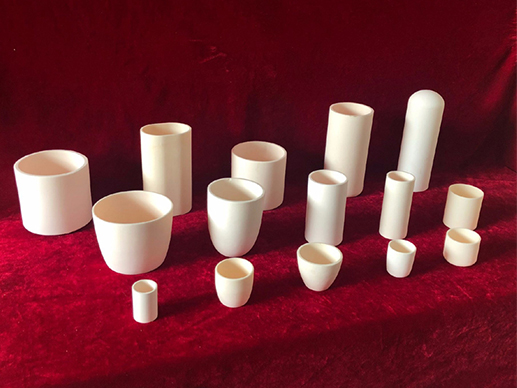Alumina Ceramic Crucibles Used for Melting Precious Metals

In the world of metallurgy and materials science, alumina ceramic crucibles are gaining widespread recognition for their superior performance in the melting of precious metals. These crucibles, crafted from high-purity alumina, have become indispensable tools for industries requiring high-temperature applications and exceptional material properties. Their usage spans a broad spectrum of sectors, including jewelry making, electronics, aerospace, and scientific research.
Unmatched Material Properties
Alumina, or aluminum oxide (Al2O3), is renowned for its excellent thermal stability, mechanical strength, and resistance to chemical attack. These attributes make alumina ceramic crucibles particularly suited for high-temperature environments, where other materials might fail. With a melting point exceeding 1700°C, alumina crucibles can withstand the intense heat required to melt precious metals like gold, silver, platinum, and palladium. Their high thermal conductivity ensures even heat distribution, preventing hot spots and ensuring uniform melting.
Advantages Over Traditional Materials
The advantages of alumina ceramic crucibles over traditional materials like graphite and quartz are numerous. Unlike graphite, alumina does not react with the metals being melted, which prevents contamination and ensures the purity of the molten metal. This non-reactivity is critical in industries like jewelry and electronics, where the quality of the end product depends heavily on the purity of the raw materials.
Moreover, alumina crucibles exhibit excellent wear resistance and durability. They do not degrade or deform under extreme temperatures, making them a cost-effective solution in the long run. Quartz crucibles, while also non-reactive, cannot match alumina's thermal shock resistance and mechanical strength, which are vital in high-temperature processes.
Applications in Various Industries
The application of alumina ceramic crucibles extends beyond metal melting. In the jewelry industry, these crucibles are essential for casting and refining precious metals, ensuring high-quality and defect-free products. In the electronics sector, they are used in the production of components that require precise and contamination-free melting processes, such as semiconductor wafers and integrated circuits.
Aerospace engineers rely on alumina crucibles for producing high-performance alloys and superalloys used in jet engines and other critical components. The ability to withstand extreme temperatures and corrosive environments makes alumina indispensable in this field. Additionally, scientific research laboratories utilize alumina crucibles for experiments involving high-temperature reactions and material synthesis, where the integrity of the experimental setup is paramount.
Technological Advancements
Recent advancements in manufacturing techniques have further enhanced the performance of alumina ceramic crucibles. Improved sintering processes and the development of ultra-pure alumina powders have resulted in crucibles with even higher thermal stability and mechanical strength. Innovations in crucible design, such as optimized shapes and sizes, have also contributed to better efficiency and effectiveness in various melting processes.
Environmental and Economic Considerations
From an environmental perspective, alumina ceramic crucibles offer significant benefits. Their durability and resistance to wear mean they need to be replaced less frequently, reducing waste and the environmental impact associated with manufacturing and disposal. Furthermore, the use of alumina, an abundant and non-toxic material, aligns with the growing demand for sustainable industrial practices.
Economically, the initial investment in high-quality alumina crucibles is offset by their longevity and reliability. Industries benefit from reduced downtime and maintenance costs, leading to higher productivity and profitability. The purity and consistency of the products obtained using alumina crucibles also enhance the overall value and competitiveness of the end products.
Conclusion

